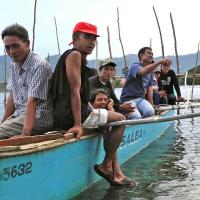Osprey
Ospreys are predatory and almost exclusively eat fish. They will nest next to any body of water that is large enough in which to hunt. They hunt from above, and snatch surface fishes directly out of the water, without getting their plumage wet. In order to blend in with sky and camouflage themselves from potential prey, ospreys are … Read more



